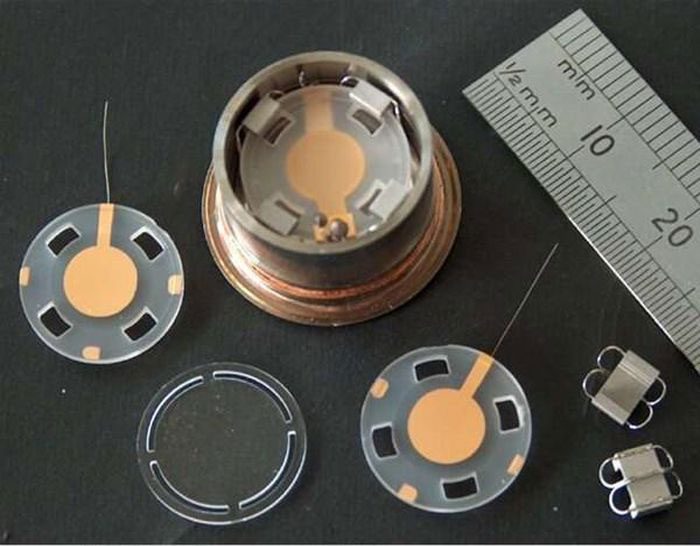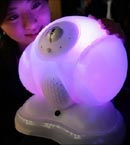Researchers at the ARC Center for Dark Matter Physics (CDM) and the University of Western Australia have developed a detector capable of using quartz to capture high-frequency gravitational waves.
High-frequency gravitational waves can be generated by a primordial black hole or a dark matter particle cloud. Scientists believe that low-frequency gravitational waves arise from two rotating black holes, which then merge, or when a star is drawn into a black hole.
Since then, a new era of gravitational wave research has begun. However, current detectors are sensitive only to low-frequency signals. Detecting high-frequency gravitational waves remains an unexplored aspect and a challenge in astronomy.

The core of the device is a quartz crystal disc.
The new detector designed by the research team at CDM aims to capture high-frequency gravitational waves. This tool is constructed from a bulk acoustic wave resonator (BAW).
The core of the device is a quartz crystal disc that can oscillate at high frequencies due to acoustic waves passing through its thickness. These waves then generate an electric charge on the device. The charge can be detected by placing conductive plates on the outer surface of the quartz disc.
The BAW is connected to a superconducting quantum interference device, known as a SQUID. This assembly is placed within multiple radiation shielding layers to protect against stray electromagnetic fields. They are cooled to low temperatures, allowing the detection of low-energy acoustic oscillations of the quartz crystal as a significant voltage with the help of the SQUID amplifier.
Commenting on this invention, Mr. William Campbell – a member of the research team, stated: “With this work, we have demonstrated for the first time that devices can be used as highly sensitive gravitational wave detectors.
This is one of two experiments currently being conducted worldwide to search for high-frequency gravitational waves. We plan to extend our reach to even higher frequencies – an aspect that has not been previously considered.”
The research team believes that the development of this new technology has the potential to provide the first detection of gravitational waves at high frequencies, offering new insights into the field of gravitational wave astronomy.
“The next step of the experiment will involve building a duplicate detector and a muon detector sensitive to cosmic particles. If both detectors find the presence of gravitational waves, that would be truly exciting,” Mr. Campbell shared.



















































